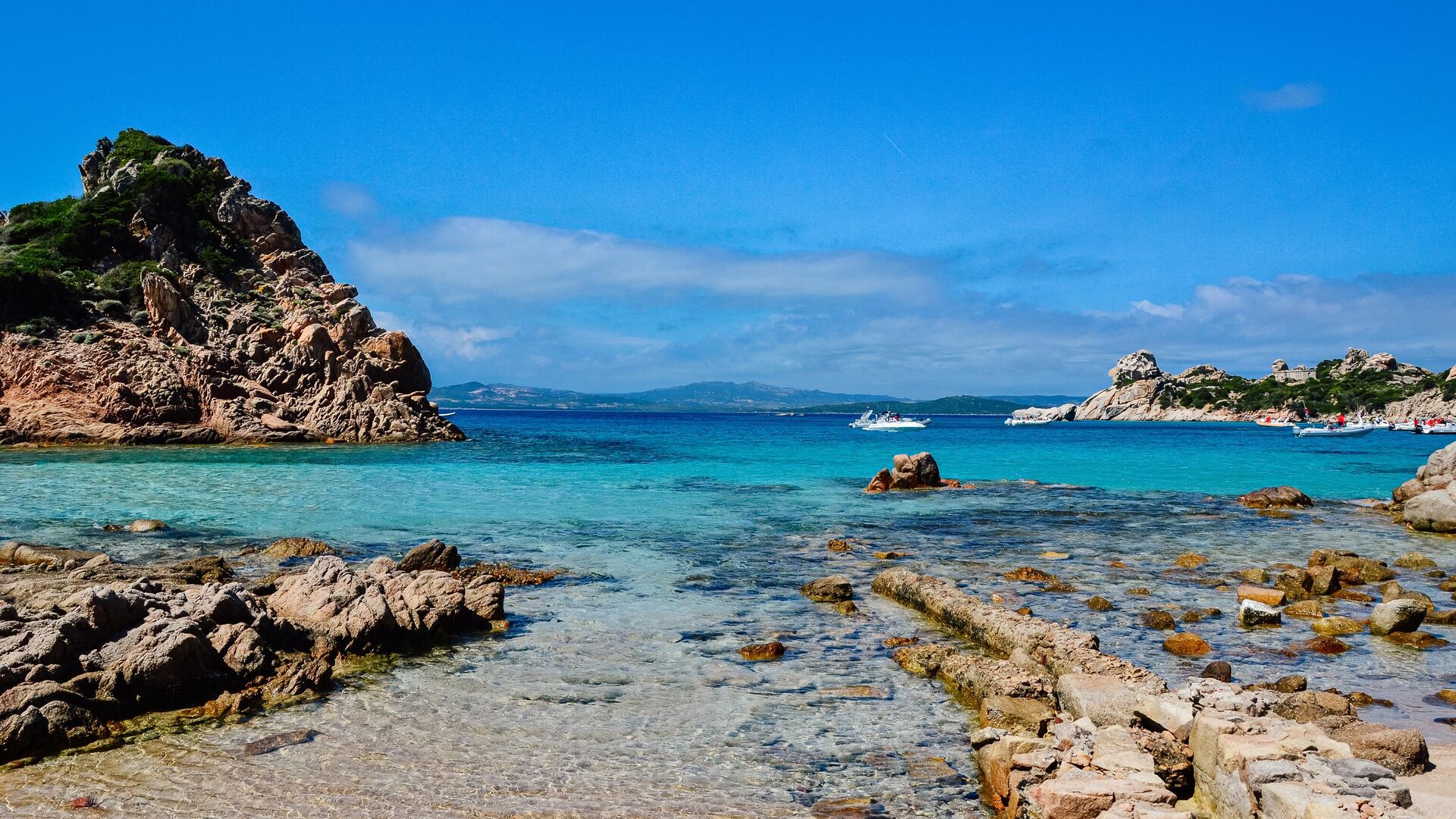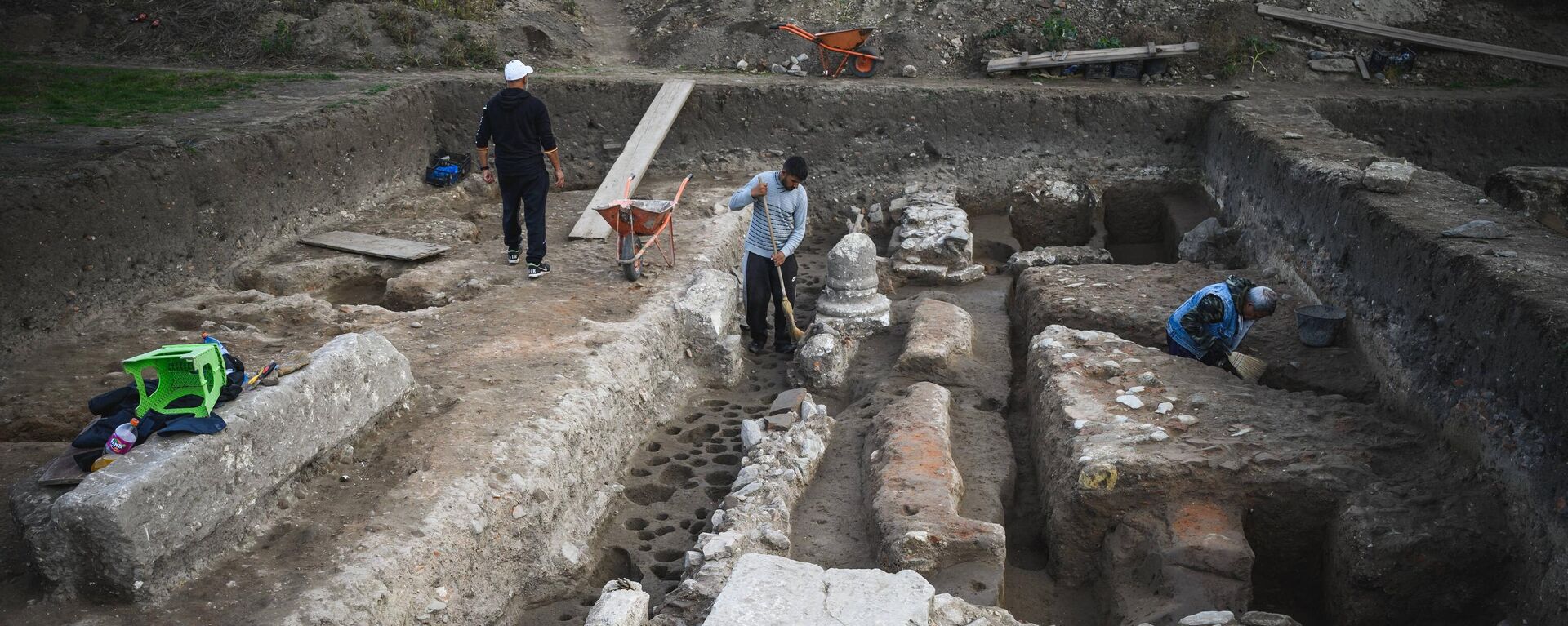https://en.sputniknews.africa/20231105/huge-roman-treasure-discovered-in-sardinia-italy-1063333157.html
Huge Roman Treasure Discovered in Sardinia, Italy
Huge Roman Treasure Discovered in Sardinia, Italy
Sputnik Africa
Sardinia is one of the twenty regions of the Italian Republic, located in the west of the Italian peninsula. Sardinia was conquered by the Roman Empire in 238... 05.11.2023, Sputnik Africa
2023-11-05T14:17+0100
2023-11-05T14:17+0100
2024-04-25T10:22+0200
italy
europe
history
discovery
research
archeology
international
https://cdn1.img.sputniknews.africa/img/07e7/0b/05/1063329291_0:279:3072:2007_1920x0_80_0_0_64d68188aee47a3e91735b52801f7171.jpg
A team of Italian archaeologists has discovered a huge hoard of Roman bronze coins, called follis, in the sea off the northeast coast of Sardinia, near the municipality of Arzachena, announced the Italian Ministry of Culture on Saturday.The Italian Ministry of Culture confirmed that the coins were in excellent condition.According to Luigi La Rocca, head of the General Directorate for Archaeology, Fine Arts and Landscape (ABAP) of the ministry, the treasure found in the waters of Arzachena is one of the most important numismatic discoveries of recent years and once again "highlights the richness and importance of the archaeological heritage" the sea still guards and conserves.Early estimates suggested that the seabed contained between 30,000 and 50,000 bronze pieces dating back to the early 4th century AD – a number that can be considered a record.In addition to this money, experts found pieces of amphorae of African and Asian production at the discovery site, but in smaller volumes.According to the body, the discovery was reported to archaeologists by a person who during a dive noticed metal objects at a shallow depth, near the coast.The Origin of the DiscoveryThe coins can be dated to the period between 324 and 340 AD. Furthermore, the follis found come from almost every mint in the empire that was active at the time, with the exception of Antioch, Alexandria and Carthage.The artifacts will be restored and then studied to deepen humanity's knowledge of the historical context in which the follis were created and used.The Italian Ministry of Culture is developing methodologies and techniques for their preservation.
https://en.sputniknews.africa/20230805/1061084806.html
italy
europe
Sputnik Africa
feedback@sputniknews.com
+74956456601
MIA „Rossiya Segodnya“
2023
Samantha Arias
https://cdn1.img.sputniknews.africa/img/07e7/0a/18/1063050346_115:0:834:719_100x100_80_0_0_1682778780537fd5aa8dd2536a012c1b.jpg
Samantha Arias
https://cdn1.img.sputniknews.africa/img/07e7/0a/18/1063050346_115:0:834:719_100x100_80_0_0_1682778780537fd5aa8dd2536a012c1b.jpg
News
en_EN
Sputnik Africa
feedback@sputniknews.com
+74956456601
MIA „Rossiya Segodnya“
Sputnik Africa
feedback@sputniknews.com
+74956456601
MIA „Rossiya Segodnya“
Samantha Arias
https://cdn1.img.sputniknews.africa/img/07e7/0a/18/1063050346_115:0:834:719_100x100_80_0_0_1682778780537fd5aa8dd2536a012c1b.jpg
italy, europe, history, discovery, research, archeology, international
italy, europe, history, discovery, research, archeology, international
Huge Roman Treasure Discovered in Sardinia, Italy
14:17 05.11.2023 (Updated: 10:22 25.04.2024) Samantha Arias
Producer / Podcast host
Sardinia is one of the twenty regions of the Italian Republic, located in the west of the Italian peninsula. Sardinia was conquered by the Roman Empire in 238 BC after the defeat of the Carthaginians in the First Punic War and became a Roman province.
A team of Italian archaeologists has discovered a huge hoard of Roman bronze coins, called follis, in the sea off the northeast coast of Sardinia, near the municipality of Arzachena, announced the Italian Ministry of Culture on Saturday.
The Italian Ministry of Culture confirmed that the coins were in excellent condition.
"All the pieces are in an exceptional and rare state of preservation. Only four pieces are damaged, although they are still legible," the ministry said.
According to Luigi La Rocca, head of the General Directorate for Archaeology, Fine Arts and Landscape (ABAP) of the ministry, the treasure found in the waters of Arzachena is one of the most important numismatic discoveries of recent years and once again "highlights the richness and importance of the archaeological heritage" the sea still guards and conserves.
Early estimates suggested that the seabed contained between 30,000 and 50,000 bronze pieces dating back to the early 4th
century AD – a number that can be considered a record.
In addition to this money, experts found pieces of amphorae of African and Asian production at the discovery site, but in smaller volumes.
According to the body, the discovery was reported to archaeologists by a person who during a dive noticed metal objects at a shallow depth, near the coast.
The Origin of the Discovery
The coins can be
dated to the period between 324 and 340 AD. Furthermore, the follis found come from almost every mint in the empire that was active at the time, with the exception of Antioch, Alexandria and Carthage.
The artifacts will be restored and then studied to deepen humanity's knowledge of the historical context in which the follis were created and used.
The Italian Ministry of Culture is developing methodologies and techniques for their preservation.
"[...] the Ministry, through the action of its central and peripheral structures, has developed recovery and conservation methodologies and techniques of exceptional effectiveness and has applied innovative evaluation strategies," said Luigi La Rocca.



